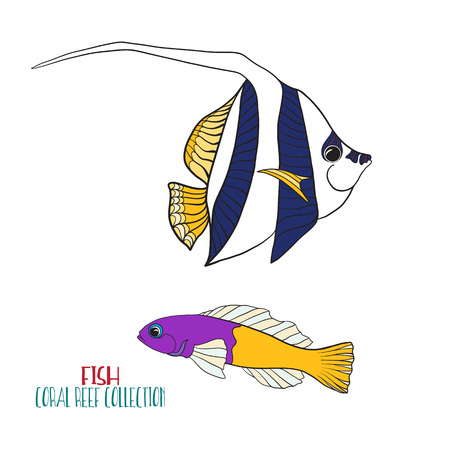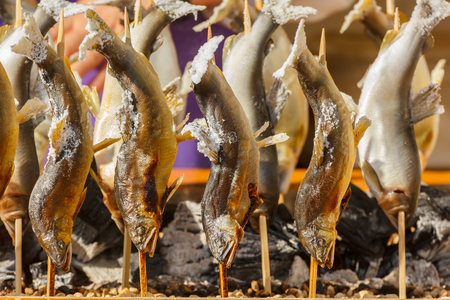Understanding Spring Fishing Conditions
Spring is an exciting time for anglers across the U.S. As winter fades, changing weather patterns and rising water temperatures create a fresh set of challenges and opportunities. Understanding these conditions is key to picking the right rods, reels, and fishing lines for a successful spring outing.
Changing Weather Patterns
Spring weather can be unpredictable—one day it’s sunny and warm, the next it’s windy or rainy. These shifts influence fish behavior. Fish are cold-blooded, so they respond directly to changes in water temperature. Sudden cold snaps can push them deeper or slow their activity, while warming trends often bring them closer to shore as they feed and prepare to spawn.
Common Spring Weather Impacts on Fishing
| Weather Pattern | Effect on Fish | Recommended Gear Adjustment |
|---|---|---|
| Warm, Sunny Days | Fish move to shallow waters, increased feeding | Lighter line, medium-action rod for better sensitivity |
| Cold Fronts / Drop in Temp | Fish become sluggish, move deeper | Longer rod for casting distance, heavier line to reach depth |
| Rainy / Overcast Days | Fish are more active throughout the water column | Versatile reel with smooth drag, moderate line weight |
Water Temperature and Fish Behavior
The gradual rise in water temperature during spring triggers key changes in fish behavior. Many popular species like bass, crappie, and trout begin moving from deep winter habitats into shallower zones where food is abundant. This migration affects not only where you find fish but also how you present your bait or lures.
How Water Temperature Influences Gear Choice
- Casting Distance: As fish spread out in search of spawning grounds, longer rods help you reach active areas without spooking them.
- Sensitivity: Lighter rods and lines improve your ability to feel subtle bites, which are common as fish wake up from winter dormancy.
- Line Strength: Early spring waters can be clearer, so using a thinner line may help avoid spooking wary fish. As vegetation grows later in the season, a stronger line might be needed.
Quick Tip:
If you notice sudden temperature swings or changing water clarity after a rainstorm, try switching up your gear setup. Having options on hand lets you adapt fast and stay ahead of shifting conditions.
2. Selecting the Right Fishing Rod
When spring rolls around, having the right fishing rod can make or break your day on the water. Spring is unpredictable—one week it’s chilly, the next you’re fishing in a T-shirt. That means versatility is key when picking out your rod. Let’s break down what to look for so you’ll be ready for bass in the lake or trout in the stream.
Key Features to Look For
| Feature | Why It Matters in Spring | Popular Choices |
|---|---|---|
| Rod Length | Longer rods (6’6” to 7’) help with longer casts and better line control, which is useful when shorelines are crowded or vegetation is thick. | 6’6” Medium-Fast for bass, 7’ Ultralight for trout |
| Power | This tells you how much force it takes to bend the rod. Medium power rods are super versatile for different species and lure weights. | Medium for all-around use, Light for panfish/trout |
| Action | The action controls how much of the rod bends when pressure is applied. Fast action rods are sensitive and great for quick hooksets. | Fast action for most American freshwater fishing |
| Material | Graphite rods are lightweight and sensitive—perfect for feeling those subtle spring bites. Fiberglass is more durable but heavier. | Graphite for sensitivity, Fiberglass for toughness (catfish/carp) |
| Handle Style | Cork handles stay warm and comfortable during chilly spring mornings. Split-grip designs give better balance and lighter overall weight. | Cork or EVA foam, split or full grip based on preference |
Popular American Rod Styles for Spring Fishing
- Bass Rods: Medium-heavy, fast action spinning or casting rods are favorites for spring bass as they handle a range of lures from soft plastics to spinnerbaits.
- Trout Rods: Ultralight spinning rods (5’ to 6’6”) make chasing spring trout fun and responsive, especially with light lines and small lures.
- Crappie/Panfish Rods: Light power rods with moderate action allow easy casting of tiny jigs and bobbers while keeping things sporty.
- Casting vs Spinning: Casting rods offer accuracy and control for heavier baits; spinning rods are beginner-friendly and excel at lighter presentations.
Troubleshooting Common Spring Challenges
If you’re dealing with muddy water after rain, go up in power so you can cast heavier lures that move water and get noticed. If fish are spooky in clear water, an ultralight setup helps present bait gently. No matter where you fish this spring, picking a rod that matches your favorite style—and gives you some flexibility—will keep you ready for anything Mother Nature throws your way.

3. Choosing the Best Reel for the Season
When it comes to spring fishing, picking the right reel can make a real difference in your success and enjoyment on the water. Two of the most popular choices among American anglers are spinning reels and baitcasting reels. Each type has its own advantages and challenges, especially when matched with springtime techniques and common target species like bass, crappie, trout, and walleye.
Spinning Reels vs. Baitcasting Reels: Pros and Cons
| Spinning Reels | Baitcasting Reels | |
|---|---|---|
| Ease of Use | Beginner-friendly, easy to cast light lures, less prone to tangles | Steeper learning curve, more prone to backlash (bird’s nest), better for experienced anglers |
| Versatility | Great for finesse techniques; works well with light lines and small baits | Handles heavier lines and lures; ideal for power techniques |
| Target Species | Crappie, trout, panfish, smaller bass | Largemouth bass, pike, muskie, larger walleye |
| Distance & Accuracy | Good casting distance; moderate accuracy for beginners | Superior accuracy and control (after some practice) |
| Maintenance & Durability | Simpler design, easier to clean and maintain | More moving parts; requires regular maintenance to keep in top shape |
| Cost Range (US Market) | $30–$150 for quality options suitable for spring fishing | $60–$300+ depending on features and brand reputation |
Spring Techniques: Which Reel Matches Your Style?
Bass Fishing in Spring: Reaction Baits vs. Finesse Tactics
If you’re throwing lightweight soft plastics or working shaky heads around shallow cover—classic spring tactics—a spinning reel is often your best bet. The smooth drag system helps with lighter lines and prevents break-offs on early-season fish. On the other hand, if you’re targeting big pre-spawn largemouth using crankbaits or chatterbaits, baitcasters provide the power needed for heavier lines and bigger hooks.
Panfish & Trout: Light Tackle Advantage
Panfish like crappie or bluegill are active as waters warm up. Spinning reels paired with ultra-light rods allow precise casts with tiny jigs or live bait—perfect for these smaller targets. Trout anglers also prefer spinning gear for working small spinners or worms in streams and stocked lakes during spring’s high activity.
Larger Species: Strength Matters
If you’re after larger walleye or even pike that move into shallows in early spring, a baitcasting setup gives you the strength to handle bigger fish and cast heavier lures farther. The increased line capacity is also helpful when you need to reach deeper or fight strong fish that make long runs.
Quick Tips for Choosing Your Reel This Spring:
- If you’re new to fishing or want versatility, start with a medium-sized spinning reel (size 2000–3000).
- If you already have casting experience and want more precision or power, try a low-profile baitcaster rated for 10–20 lb test line.
- Select your reel based on your main target species and favorite springtime techniques—don’t be afraid to mix it up as conditions change!
- Look for corrosion-resistant models if you’ll be fishing both freshwater lakes and brackish rivers this season.
This season is all about trying new approaches as fish become more active. Picking the right reel helps ensure every cast counts during your spring adventures.
4. Matching Line Types and Strengths
When it comes to spring fishing, picking the right fishing line is just as important as choosing your rod and reel. Spring weather can be unpredictable—one day the water’s clear and calm, the next it’s murky or fast-moving. Knowing which line to use helps you adapt to these changing conditions and improves your chances of landing more fish.
Understanding Fishing Line Types
There are three main types of fishing lines: monofilament, fluorocarbon, and braided. Each has its own strengths and weaknesses for different spring situations.
| Line Type | Main Features | Best For |
|---|---|---|
| Monofilament | Flexible, stretches easily, floats on water | Beginners, topwater lures, clear shallow waters |
| Fluorocarbon | Nearly invisible underwater, sinks quickly, low stretch | Clear water, wary fish, finesse techniques |
| Braided | Very strong for its diameter, little to no stretch, visible in water | Heavy cover, thick weeds, casting long distances |
Selecting Line Weight (Pound Test)
The “pound test” tells you how much weight a line can handle before breaking. For spring fishing, you’ll want to match your line strength with the type of fish you’re targeting and the conditions.
| Pound Test Range | Best Use Cases | Example Fish Species |
|---|---|---|
| 2-6 lb test | Light tackle, small streams or ponds, finesse fishing | Panfish, trout, crappie |
| 8-12 lb test | Larger lakes or rivers, general bass or walleye fishing | Largemouth bass, walleye, catfish (small) |
| 14-20+ lb test | Heavy cover or big game fish in tough conditions | Northern pike, muskie, big catfish |
Tips for Choosing Your Line This Spring:
- If the water is clear after snowmelt or rain, try fluorocarbon for its low visibility.
- If you’re casting into brush or heavy weeds where snags are common, braided line gives you extra strength without added thickness.
- For most casual spring outings targeting bass or panfish in moderate cover, an 8-10 lb monofilament is a safe bet.
- If you’re not sure what to use, start with a monofilament—it’s affordable and versatile.
Matching your line type and strength to your rod and reel setup—and to the ever-changing spring conditions—will make your time on the water more successful and a lot more fun.
5. Regional Considerations and Local Species
When it comes to spring fishing in the U.S., where you fish makes a big difference in the kind of gear you’ll want to bring along. Different regions have their own unique bodies of water, weather conditions, and local fish species. Here’s a breakdown of how your rod, reel, and line choices might change depending on whether you’re fishing in the Midwest, South, West Coast, or Northeast.
Midwest: Lakes and Rivers Full of Bass and Walleye
The Midwest is famous for its lakes and rivers, making it a hotspot for largemouth bass, smallmouth bass, walleye, and northern pike. Medium-action spinning rods paired with 2500-3000 size reels are popular because they offer versatility for both casting crankbaits and jigging. For line, 8-12 lb monofilament or fluorocarbon works well since the waters can be clear but not overly pressured.
Common Midwest Gear Choices:
| Species | Rod Type | Reel Size | Line |
|---|---|---|---|
| Largemouth Bass | Medium-Heavy Spinning/Casting | 2500-3500 | 10-15 lb Mono/Braid |
| Walleye | Medium Spinning | 2000-2500 | 8-10 lb Fluorocarbon/Mono |
| Northern Pike | Heavy Spinning/Casting | 4000+ | 20+ lb Braid/Leader |
The South: Warm Waters and Big Bites
The South is all about largemouth bass, catfish, crappie, and sometimes saltwater fishing if you’re near the Gulf Coast. You’ll often need slightly heavier tackle for those strong southern bass or big cats. Consider medium-heavy rods with fast action tips for bass, and sturdy baitcasting reels for catfish. Braided line (15-30 lb) is common here due to heavy cover like lily pads and timber.
Common Southern Gear Choices:
| Species | Rod Type | Reel Size | Line |
|---|---|---|---|
| Largemouth Bass | Medium-Heavy Casting/Spinning | 3000+ | 12-20 lb Braid/Mono |
| Catfish | Heavy Casting/Spinning | 4000+ | 20-30 lb Mono/Braid |
| Crappie | Light Spinning | 1000-2000 | 4-6 lb Mono/Fluoro |
West Coast: Trout Streams to Ocean Giants
The West Coast offers everything from mountain trout streams to Pacific saltwater fishing. If you’re hitting freshwater streams for trout, go light—think ultralight spinning rods with 2-6 lb test mono or fluorocarbon. For coastal salmon or surf fishing, upgrade to medium-heavy rods with larger spinning reels and 15-25 lb braided line.
Common West Coast Gear Choices:
| Species | Rod Type | Reel Size | Line |
|---|---|---|---|
| Rainbow Trout (Freshwater) | Ultralight Spinning | 1000-2000 | 2-6 lb Mono/Fluoro |
| Panfish (Lakes) | Light Spinning | 1000-2000 | 4-6 lb Mono/Fluoro |
| PACIFIC Salmon (Saltwater) | Medium-Heavy Spinning/Casting | 4000+ | 15-25 lb Braid/Mono |
| Bass (Lakes) | Medium Spinning/Casting | 2500-3500 | 8-12 lb Mono/Braid |
Northeast: Cold Water Action with Trout and Stripers
The Northeast is home to cold-water streams packed with trout as well as tidal rivers where striped bass run strong in spring. For stream trout, ultralight setups with 2-6 lb line are perfect. When going after stripers in bigger rivers or off the coast, switch to medium-heavy rods, larger reels (4000+), and beefier 15-25 lb braid or mono to handle these hard fighters.
Northeast Target Species & Recommended Gear:
| Species | Rod Type | Reel Size | Line |
|---|---|---|---|
| BROOK/BROWN TROUT | Ultralight Spinning | 1000–2000 | 2–6 lb Mono / Fluro |
| Striped Bass | Medium – Heavy Spinning / Casting | 4000 + | 15 – 25 lb Braid / Mono |
| Smallmouth Bass | Medium Spinning / Casting | 2500–3500 | 8 – 12 lb Mono / Fluoro |
Tips for Matching Your Gear to Your Region
Before you head out, check local regulations—some areas require specific types of lines or hooks for conservation reasons. Ask at local tackle shops what’s biting and what gear works best for your target species this spring—they’ll know what’s hot right now! Experiment with different combos until you find what feels right for your regional waters.
6. Tips for Upgrading or Maintaining Your Gear
Getting your fishing gear ready for spring is all about making sure everything works smoothly and maybe adding a few upgrades that won’t break the bank. Whether you’re dusting off last season’s equipment or looking to pick up some new basics, these tips will help you get set for a successful spring fishing adventure.
Check and Clean Your Rods
- Inspect guides for cracks or grooves—these can damage your line.
- Wipe down rods with mild soap and water; dry them completely to prevent corrosion.
- Tighten reel seats and check for loose handles or ferrules.
Reel Maintenance Matters
- Take apart your reels (refer to the manufacturer’s manual) and clean out old grease and grit.
- Add fresh lubricant to gears and bearings—don’t overdo it, a little goes a long way.
- Replace any worn drag washers or springs if needed.
Review and Replace Your Fishing Line
- Look for frays, nicks, or memory coils in your line. Replace anything that looks suspect—old line can cost you fish!
- If using braid, check knots and make sure there are no weak spots.
- Spool on fresh mono or fluoro if it’s been a while since your last change. A good rule: change line at least once per season for best results.
Affordable Upgrade Ideas
| Gear Type | Simple Upgrade | Why It Helps |
|---|---|---|
| Rod | Add a comfortable grip wrap or upgrade to a lightweight model under $100 | Improves casting comfort and reduces fatigue on long days |
| Reel | Upgrade to smoother ball bearings or switch to a sealed drag system | Makes retrieves more reliable, especially in wet spring conditions |
| Line | Try a premium abrasion-resistant mono or fluorocarbon leader | Boosts confidence when fishing around rocks, logs, or other snags |
Quick Checklist Before You Hit the Water:
- Tighten all connections and check hardware for rust or wear.
- Pack extra line, leaders, and basic repair tools just in case.
- If you’ve made upgrades, take a few practice casts at home or in the backyard so you’re comfortable with any changes before hitting your favorite lake or river.
With a little care and smart upgrades, your gear will be ready for whatever spring throws at you—whether it’s chasing bass at dawn or landing trout after school with the kids. Happy fishing!

